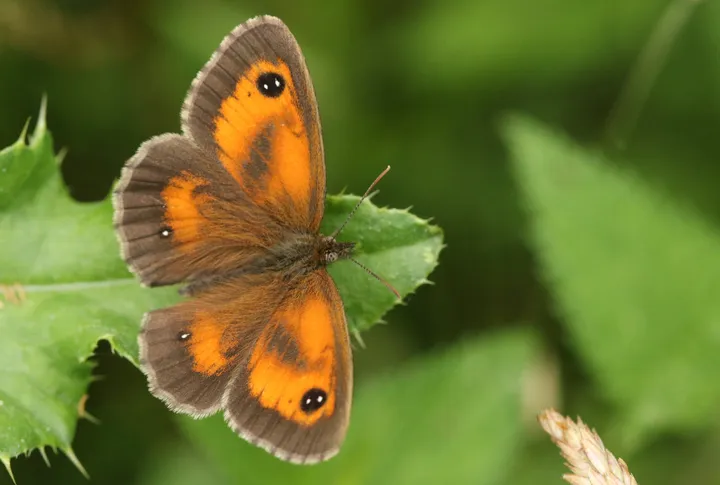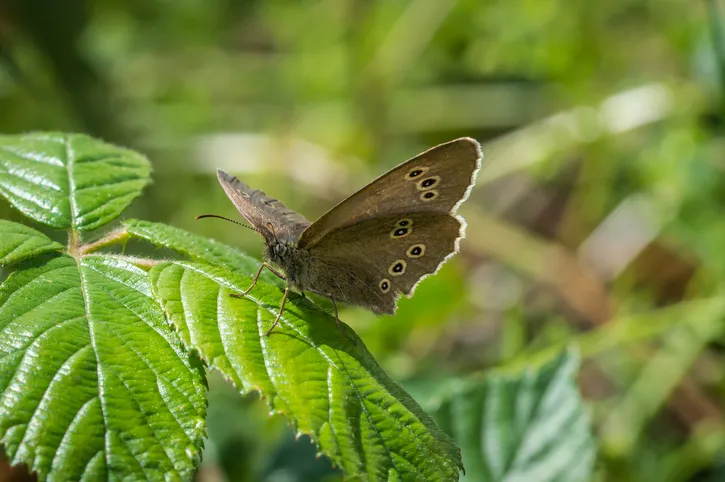By July and August, the countryside is blowsy and drowsy – it's a time of wildflower meadows buzzing with insects, hedgerows beginning to fruit and waterways full of new life. While most birds have quietened down after the drama of spring, there is still so much to see.
Our expert summer wildlife guide explains how to identify the season’s best wildlife spectacles and where to see them in the UK.
Best summer wildlife to spot in the UK
Hobbies hunting dragonflies
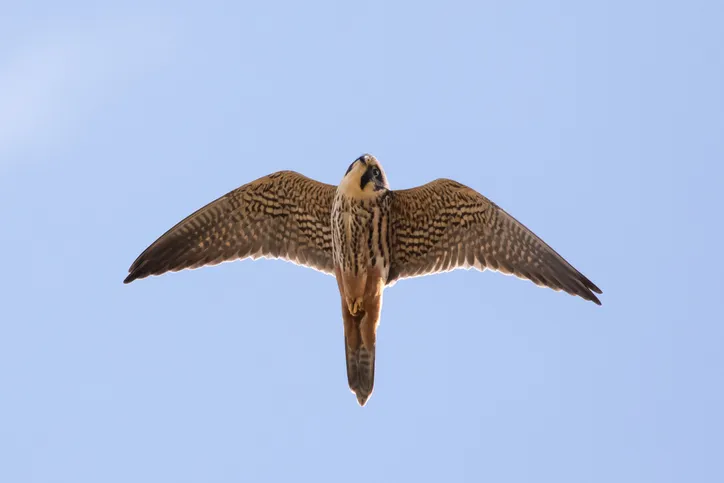
If you’re out watching dragonflies at a wetland or riverbank, you might spot this balletic hunter preying on them. A migratory falcon that spends the summer hunting over wetlands and heaths, the hobby is agile enough to snatch swallows and house martins in flight but it also loves catching dragonflies. Snatching them in its talons, it devours the insect in flight – you can even see the metallic scales cascading from the sky. Hobbies are perhaps the most handsome of Britain’s falcons, with a black face mask, speckled chest slate blue back and reddish thighs and undertail. They appear to fly on lazy long wingbeats but are deceptively fast – above you one moment, on the horizon the next.
Hobbies hand around until autumn before wending their way to sub-Saharan Africa for the winter (the exact location is still a mystery).
Wildflowers blooming

Most of Britain’s fields are harvested for silage in May but some are left and harvested for hay later in the year. If these grasslands have not been excessively treated with fertilisers, they may yield stunning displays of wildflowers all through the summer. Purples and mauves seem to dominate at this time of year, from the big straggling flowers of knapweeds and the lilac cushions of field scabious and devil’s bit scabious to delicate harebells and meadow cranesbill, a wild geranium.
Looks out for the soft yellow spikes of ladies bedstraw (sweet-scented when dried and once used to freshen the bed chamber), the yellow clumps of low-growing bird’s foot trefoil and the complex white heads and feathery leaves of yarrow. The names alone are a joy. Listen also for the whirring, churring, chittering and fiddling of grasshoppers, crickets and other creatures – it's a symphony in the long grasses.
Three common meadow butterflies
As you’re wandering through a summer meadow looking at the flowers (above), you’ll no doubt disturb many insects, including several species of butterfly. The slow flying, slightly lazy looking meadow brown is the most common of these and, in the right conditions, can swarm over the grassland. It is milk chocolate brown with orange patches and small ‘eyes’ on its upper wings.
The ringlet is darker, and more velvety, with lines of spots on each of its four wings. The gatekeeper is similar to the meadow brown but smaller and with more orange on its wings. It tends to prefer the hedgerows at the meadow edge and is often seen on footpaths and stiles, hence its name.
- Meadow guide: where to see and best wildflowers to plant
- Guide to British butterflies: how to identify and the best places to spot
The mysterious churring of the nightjar

Another migrant that sings well into midsummer – but with the strangest of all UK bird songs. The nightjar emits a mechanical/insect-like buzz, known as the nightjar’s ‘churr’. This eerie sound seems to swell up from the dusk until it seems to fill the air – you almost don’t notice it until it is the only sound you can hear.
Nightjars like woodland edges and glades, especially where forest has been previously cleared and is regenerating. Males make circular display flights, clapping their wings together audibly to attract the females. They use their wide mouths to catch moths and other night-flying insects. After a night of churring, hunting and displaying, this bat-like bird uses its cryptic colouring to blend with its woodland surroundings to rest out the day.
Heather sweeping over the hills

By late summer, the hills and moors of much of northern and western Britain become swathed in heather, the purple flowers providing a relief from the blanket of green bracken that smothers the slopes. Known as ling, heather thrives on acidic, peaty soils and even occurs in woodland if the conditions are right.
Young shoots provide nourishment for moorland birds especially red grouse, while the flowers offer nectar for insects until October. Moorland birds such as skylarks, meadow pipits and stonechats find protection for their nests below the wiry, sprawling stems.
Bats flitting at dusk

The long, warm still evenings offer excellent chances to spot bats hunting in the twilight. Even in cities, you’ll spot the fast, butterfly-like flights of these winged mammals as they pinpoint prey such as moths with their echolocation and snap them up mid-air. The UK has 18 species of bat but the species you’ll most likely encounter is the pipistrelle – our smallest and most numerous species. But a trip to a canal or local hedgerow at dusk might yield larger bats, such as Daubenton’s bat, the greater horseshoe or even out largest bat, the noctule (still no bigger than the palm of your hand).
Dragonflies patrolling the waterways

The best place to be in the height of summer is beside the water. Not only is it cooling and soothing on a hot day, there is always a lot of wildlife action. The most obvious, beyond the waterbirds, will be dragonflies. The largest (at 8cm long) is the emperor dragonfly but all are impressive insects.
All spend their larval stage underwater. The fiercely predatory nymphs feed on invertebrates, tadpoles and fish before emerging and transforming into the adults we know so well. They too are hunters, catching flies and other aerial prey in sorties on buzzing wings.
Dragonflies are loosely divided into darters, chasers, skimmers and hawkers.
Elegant demoiselles on the wing
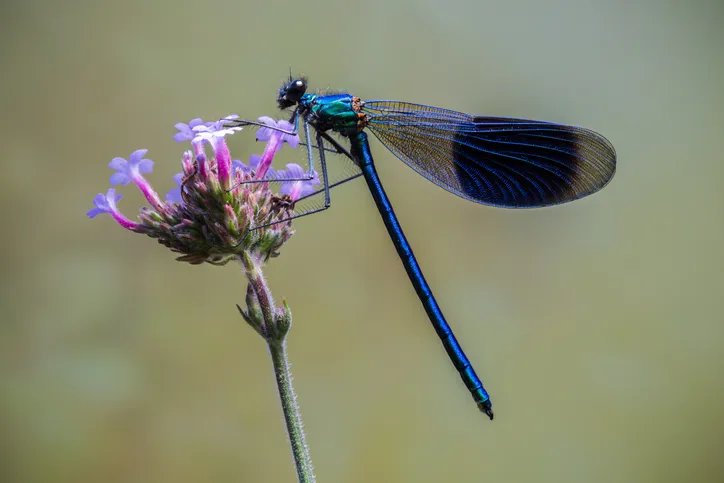
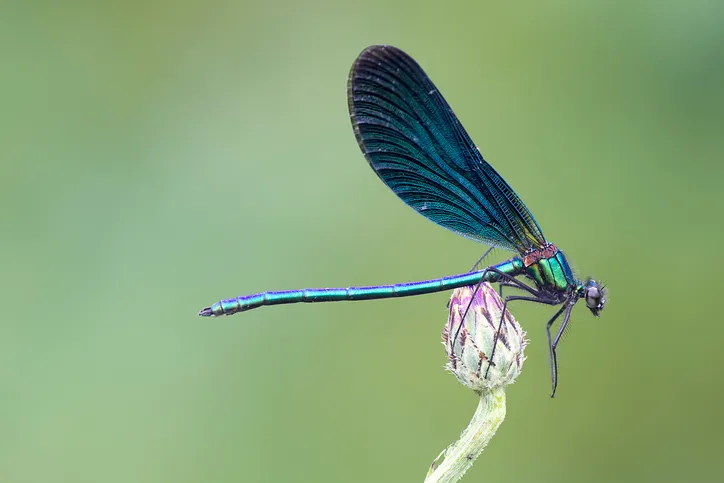
These are related to dragonflies but are more delicate, have slowly, almost lazy wingbeats and a butterfly-like flight rather than the more direct motion of the dragonflies. There are two species of demoiselles in the UK, the banded – which has a clear spot or band on its wing – and the aptly named beautiful demoiselle. In the latter, the male is a gorgeous metallic blue while the female is green with brown wings. Demoiselle’s prefer streams and rivers to still waters.
Bees and butterflies pollinating
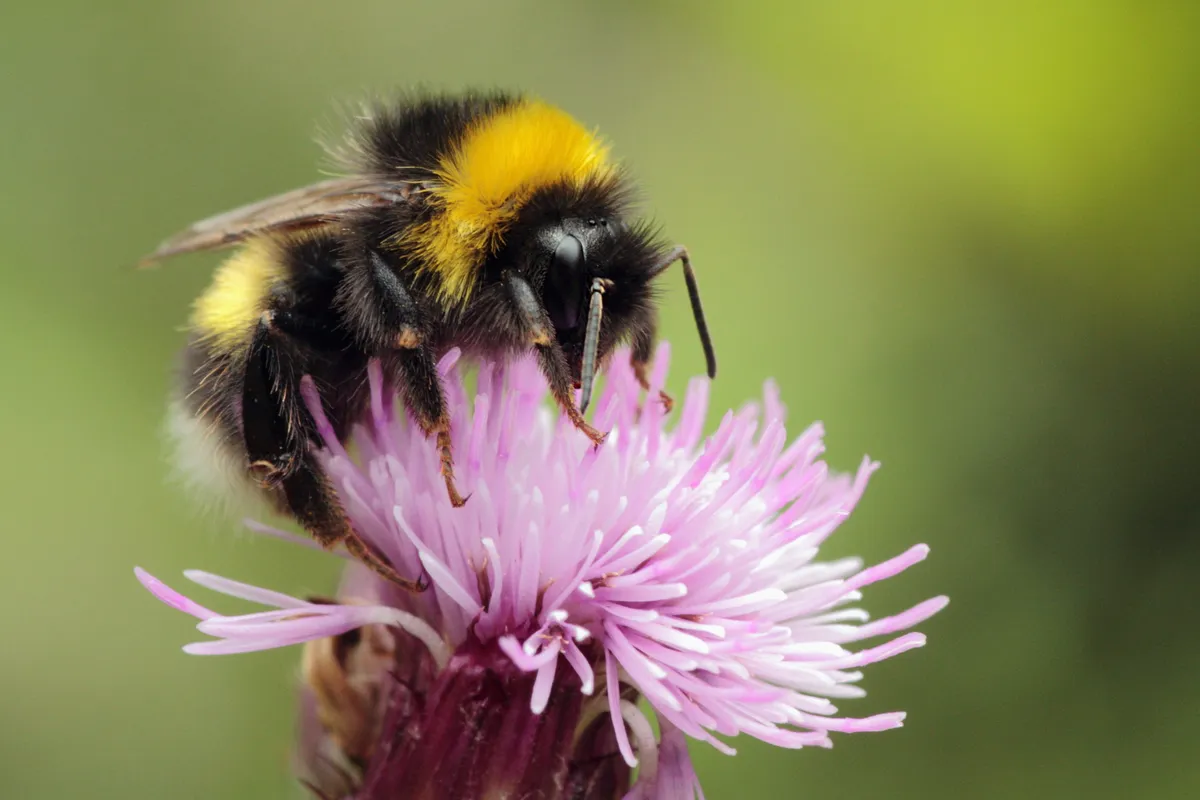
Bees are one of our more commonly-known pollinators, but there are a range of species which can act as pollinators including butterflies, moths, wasps, beetles, and flies.
Bees play a crucial role in the life-cycle of plants by pollinating in the spring and summer months. This process is essential because it allows plants to reproduce, and many plants depend on bees or other pollinators to survive.
Butterflies are another key pollinator that we should be welcoming to our gardens. There are approximately 60 species British butterflies that grace our shores annually, including regular migrants. However, many of our most loved British butterfly species are at risk of extinction, so planting blooms in our gardens can help them survive.

